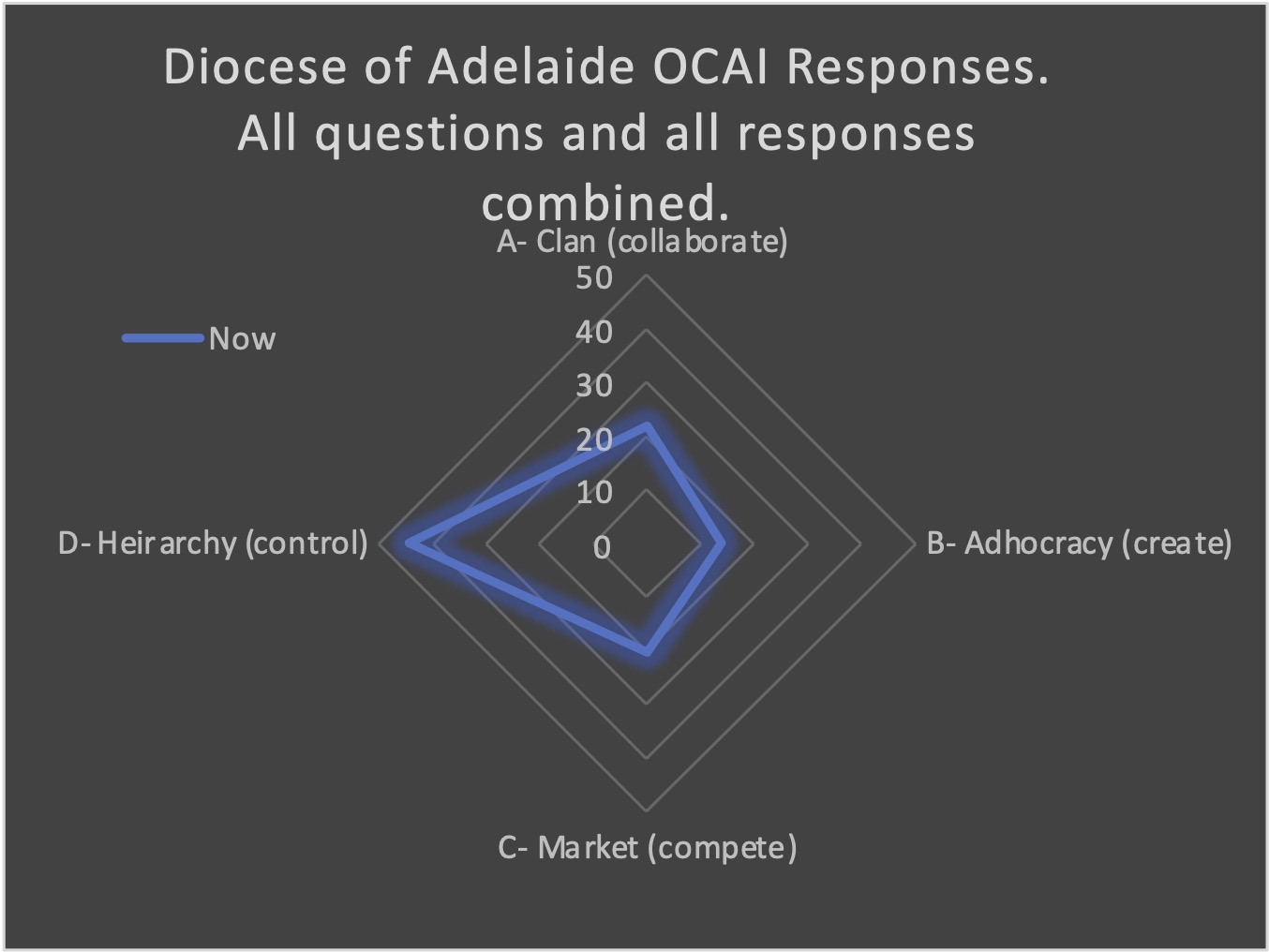In the second of a three-part series, the Ven. Sophie Relf-Christopher shares some surprisingly encouraging findings from her master’s dissertation research into the Diocese’ cultural health, and the potential flourishing of its parishes.
In part one of this series, we noted the significant benefits of being the Anglican Diocese of Adelaide in 2023, as well as the considerable difficulties. I challenged the Adelaide Diocese to rethink the purpose of our assets so we might generously support new initiatives and respond to our contemporary climate with the agility required in the post-post-modern world.
Now I want to share the basis of my research into our diocesan organisational culture and in this piece, show how we perceive our current culture.
The data from participants shows they have an exceptionally clear and consistent picture of how hierarchical we are as a Diocese, how prepared we are to be risk-taking and entrepreneurial, how strongly we sense being part of a diocesan family, and how competitive we are with other faiths and denominations for market-share.
The focus was squarely on Diocesan culture, with a view to assist the flourishing of parish ministry.
To that end all parish clergy eligible to sit on their Parish Council – that is those that earn at least a third of a stipend – and all lay and ordained members of the Diocesan Council, were offered the opportunity to respond.
The four organisational culture types
I used the Organisational Culture Assessment Instrument (OCAI) which has been used reliably in more than 10,000 organisations over the past 20 years and employs a competing values framework model. The data focusses on four conflicting characteristics of organisations or culture profiles:
- the hierarchy organisational culture, characterised by authority-based management control, bureaucratic systems, and a desire for reliable output.
- the market organisational culture, highly competitive and focused on pursuit of results and profit. It looks to strengthen market share and focuses on meeting targets.
- the clan organisational culture, which operates like a family unit where members share their values and goals. Clan culures place a primacy on cohesion and participation.
- the adhocracy organisational culture, which is pioneering, focussed on innovation, enabling entrepreneurship, cutting edge ideas, and less centralised power.
The Diocese of Adelaide’s results at glance
For each of the survey questions the participants attributed a percentage to each of these profiles according to how they sensed the Diocese is weighted.
Participants weighted these four competing values when answering questions about a range of organisational core elements, namely: the dominant characteristics of the Diocese, the organisational leadership of the Diocese, the management of employees in the Dioceses, the Diocesan organisational glue (what keeps us together), and the Diocese’ strategic emphasis. The results were remarkably, and astonishingly, in agreement no matter the age, gender, or the Diocesan position/title of the participants. The participants rate our current culture as:

What does a strong focus on hierarchy mean for the Diocese of Adelaide?
The organisational culture profile for our Diocese is perceived to be strongly hierarchical.
Organisations with a strong focus on hierarchical culture tend to be fixated on maintenance, control, stability, and are primarily inwardly orientated.
Similar surveys applied in other church contexts outside our Anglican Diocese do not always, or even often, produce such strong perceptions of the influence of hierarchy on the dominant culture. We are special – but are we happy? In Part Three we will investigate our preferred cultural pattern in the context of our perception of the current culture profile.
Why or how did the ADA become such a hierarchy -dominant culture?
Culture tends to evolve as changes in an organisation’s external environment force adaptation, and consequent adjustments to their internal functioning.
The perception of the dominance of hierarchy can be understood in part because churches like ours are fundamentally hierarchical by nature- just watch any Diocesan procession. However, in the case of our Dioceses, immediate history can also partly explain how we have become so focused on regulation, predictability, and control.
The past 20 years or so have witnessed a rapid expansion in legislation relating to the governance required of all organisations.
The legislative responses and recommendations required to address the failings of churches and other institutions in child-protection matters has created a situation in which deferring to hierarchical administrative apparatus was probably a necessity, given the gravity of the need.
Adding to the weight of Safe Ministry compliance for both the Diocese and for the parishes, are new requirements for compliance with other legislation to do with (for example) financial reporting, director’s obligations, Work Health and Safety, and privacy.
Many of the compliance burdens require resources that most parishes simply do not have.
It was necessary, therefore, for the Diocese to provide direction for parishes, and create policies and ordinances to safeguard the mission of the church. In many ways, only the hierarchy, using hierarchical apparatus such as legislation and policy, could lead the organisational responses required. Consequently, it may be that the perception of a dominant hierarchical culture has swelled, to the likely impoverishment of other quadrants; clan, adhocracy and market.
What now for our hierarchical Diocese?
With an image of what the Adelaide Diocese’ participants view to be its current cultural reality, we can turn in the final part of this series to the vision of the preferred cultural profile and the potential for the transformation sought.
In part three we will delve into what the participants said they wanted in their Diocesan culture. *Spoiler alert* everybody wants the same thing.
Are we ready to make the changes that would enable the flourishing of Adelaide’s parishes?
Part One: Before the lights go out
Part Three: I’ll tell you what you want, what you really, really want






